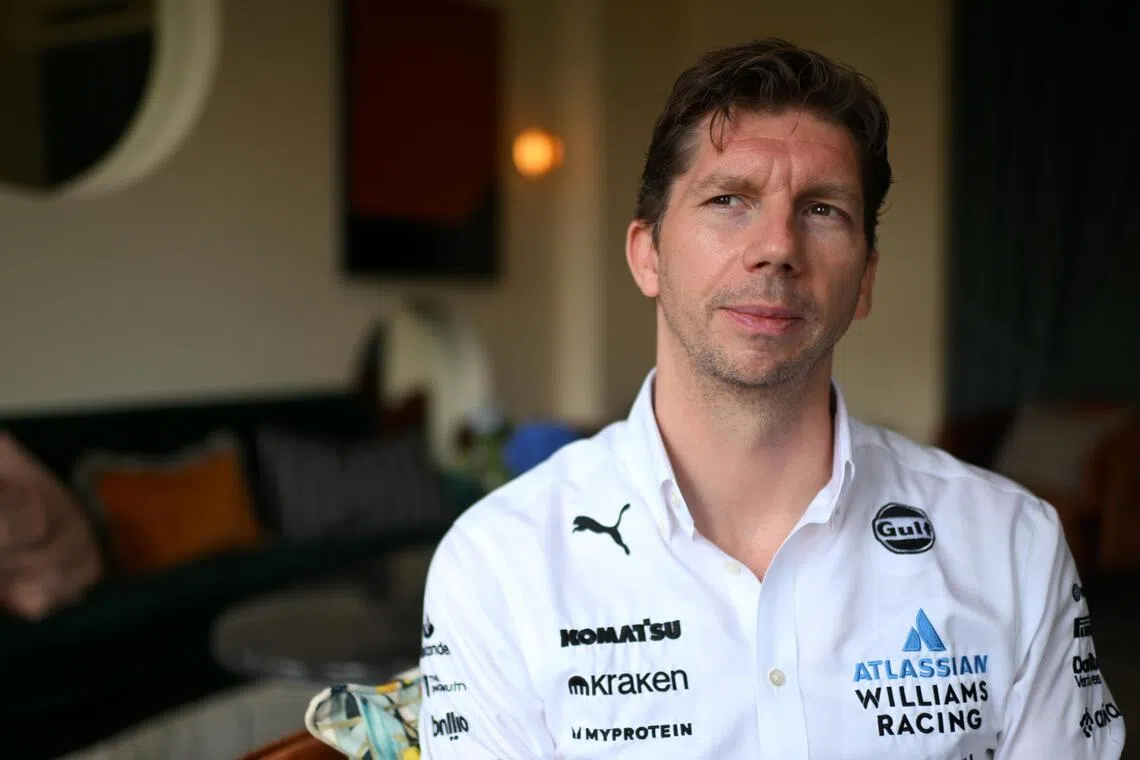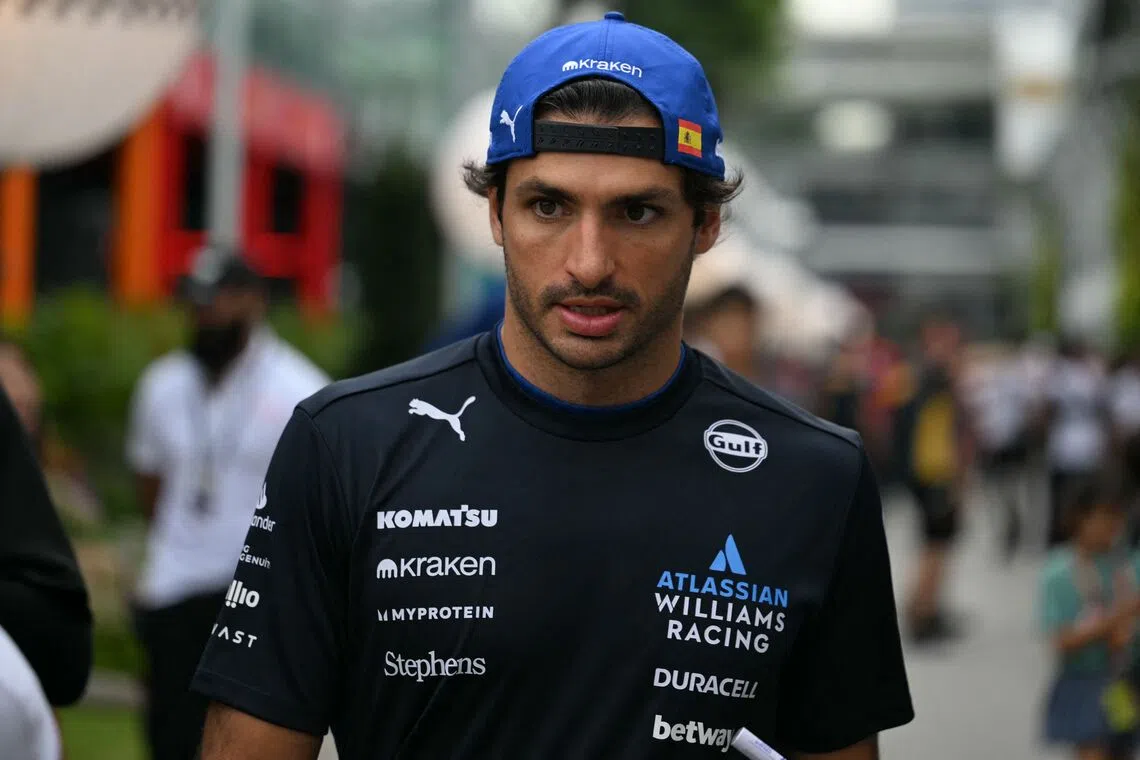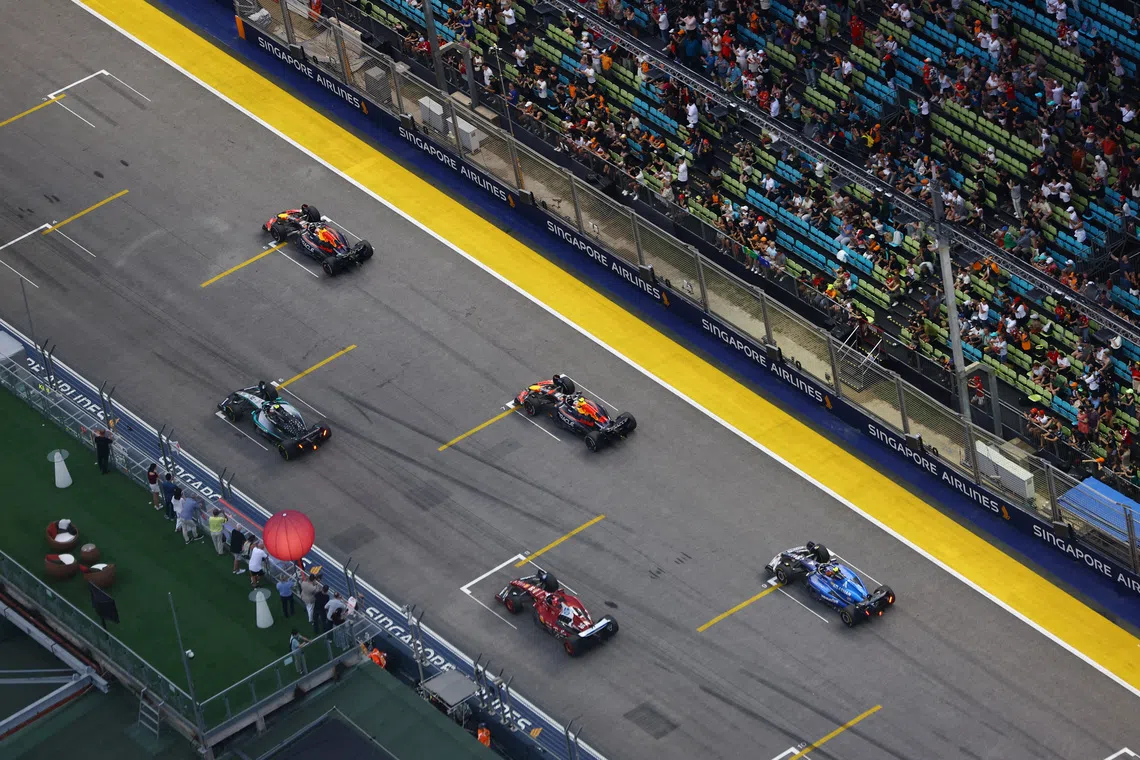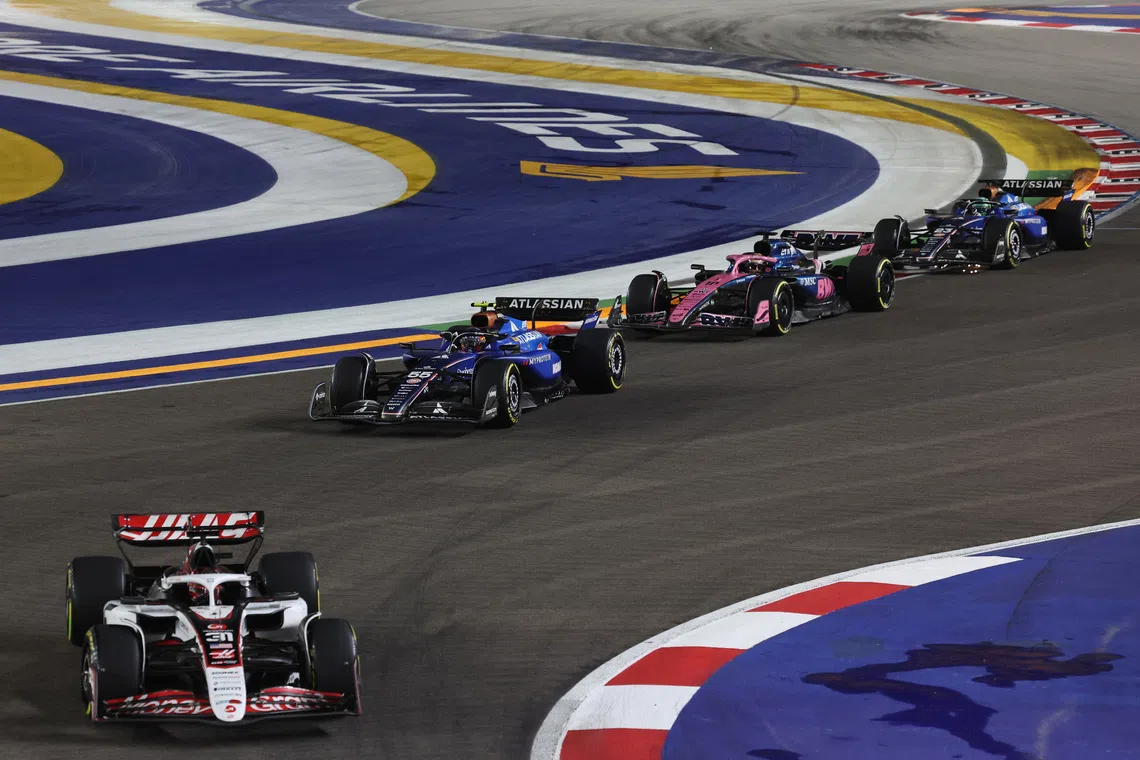From struggle to speed: Williams aims to win F1 races, become profitable by 2028
Sign up now: Get the biggest sports news in your inbox

The Atlassian Williams Racing team's rebuild will take "10 to 20 years", said CEO and team principal James Vowles.
ST PHOTO: SHINTARO TAY
Follow topic:
- Williams Racing, under James Vowles, faced a stark rebuild due to lack of data, processes and a proper corporate structure after years of decline.
- Securing £555.5 million investment, Vowles focused on infrastructure, including a new simulator and upgrading facilities, to tackle brain drain and improve performance.
- With a multi-year sponsorship deal and improved standings, Vowles aims for profitability by 2028, focusing on commercial viability and championship performance.
AI generated
SINGAPORE – When James Vowles took over as team principal of British Formula One outfit Williams in 2023, he quickly realised the scale of the challenge he had inherited.
The lack of data, processes and even a proper corporate structure came as a rude shock to the former strategy director of Mercedes, the team who dominated the sport with eight consecutive constructors’ titles and seven drivers’ championships between 2014 and 2021. It was a stark contrast to the well-oiled machine he had left behind.
Once a dominant force in F1 with multiple world championship wins, Williams have fallen into debt and seen a steep decline in recent years, finishing last in the constructors’ standings four times between 2018 and 2022.
For Vowles, an engineer by training, rebuilding one of motor racing’s most iconic teams and turning it around would be an uphill battle requiring substantial investment.
It would also stretch far beyond the race track and test his mettle as a businessman and strategist.
He likened the challenge of rebuilding Atlassian Williams to a “10-20-year play at a 50-year-old start-up”, rather than a short two- three-year project.
“I’m not selling road cars like Ferrari, I’m not selling fizzy drinks (like Red Bull). We are selling effectively racing, and that is even harder to secure investment for,” he told The Straits Times during an Oct 3 interview.
Recalling his three-hour conversation with Williams’ owners when they had met to poach him from Mercedes, Vowles revealed that he had put an “extraordinarily large number on the table” for what that investment needed to be. More critically, he also asked for time.
He was afforded both.
In October 2024, with help from owners Dorilton Capital – a US investment firm – Williams raised £271.5 million (S$472.5 million) through a share placement. A further £284 million was raised in December 2024, taking the total to £555.5 million.
Vowles said the first investment made under his watch was a new state-of-the art driver-in-the-loop simulator, which allows the driver to actively control the car during simulation tests, for £15 million.
Within the first few months, the team also invested more than £50 million on upgrading old machinery and facilities, among other things.
Funds were needed for everyday organisational functions, such as implementing proper software management tools, after Vowles discovered that the team had been tracking car components in an Excel spreadsheet containing over 100,000 lines.
“There was no data on our commercial revenue or human resources planning – the numbers were all in people’s heads, and if that person was on holiday or ill, there was no process that followed,” he explained.
Williams were also dealing with a serious brain drain. According to Vowles, the company had about 700 employees when he joined, but was experiencing a turnover of a quarter of its workforce every year.
“Anyone that runs a company will tell you that is a disaster. F1 is a highly competitive business and moves at an incredible pace. We could not run a business that way,” he said.
In 2025, Williams signed former Ferrari driver Carlos Sainz to partner Alexander Albon.

Williams' driver Carlos Sainz arriving for the first practice session ahead of the Formula One Singapore Airlines Singapore Grand Prix on Oct 3.
PHOTO: AFP
Vowles said: “We have to make sure that we are spending money in the right places. I also wanted to give ourselves enough time to bring the right people in who could choose their pathways in our teams.
“In our world, most good talents are on three-year contracts, so it takes time for them to join us at the right time.”
As team principal of Williams, Vowles, who is 46, must make swift calls – on the track and in the boardroom – to win races and keep the team profitable.
In F1, teams receive a portion of the prize money based on their position in the championship standings. Because building a competitive car is extremely costly, teams face constant pressure to score points in every race to secure a solid return on their investment by season’s end.
This also means smaller teams can quickly fall into debt after several bad seasons.
Williams had been a family business since they were formed by Frank Williams in 1977. His daughter Claire took over in 2013 after her father’s health declined; the latter died in 2021.
During that time, Williams’ performance took a hit and income began to dwindle. By 2014, they were reporting losses, and were bought out by Dorilton for US$200 million (S$259.2 million) in August 2020 to avoid going into liquidation.
The new ownership marked the end of the last true independent F1 team in the sport, who operated on their own without significant backing from a major car manufacturer or corporate sponsor.
In the cut-throat world of F1, bankruptcy is a real threat to underperforming teams, especially smaller ones.

In F1, teams receive a portion of the prize money based on their position in the championship standings.
PHOTO: REUTERS
Between 2012 and 2016, three teams – Manor Marussia, Caterham and HRT – left the sport after going into liquidation.
More recently, Force India went bankrupt in the middle of their 11th season in 2018 and had to be bought out by Canadian billionaire and current owner Lawrence Stroll, who later rebranded the team as Aston Martin.
But Williams appear to be clawing their way back. In 2024, the team received a reported US$79 million in prize money for finishing ninth in the 10-team constructors’ championship, bringing total revenue for the year to US$242.3 million.
However, operating expenses rose and they recorded a net loss of US$67.3 million, which narrowed from 2023.
With new F1 technical regulations coming into effect in 2026 that will change current car designs, Vowles expects losses to widen as expenses rise and the team invest more heavily in research and development.
Still, his target is to turn Williams back to profitability by 2028.
“Every penny to make the car faster will be spent to achieve this goal, so profitability has to come from being commercially viable and being performant in the world championship – that is the point of a racing team.”
While Williams have not won an F1 race in over a decade – their last victory was on May 13, 2012 – Vowles is starting to see encouraging signs that the rebuild is moving in the right direction.
At the Azerbaijan Grand Prix on Sept 21, Sainz finished third to put the team on the podium for the first time since 2021.
Ahead of this weekend’s United States Grand Prix in Texas, they are fifth in the constructors’ standings on 102 points, which exceeds their total points tally from 2018 to 2024.
At the recent Singapore Grand Prix, despite starting at the back of the pack, Sainz finished 10th.
Performing well in the championship also makes an F1 team more attractive to sponsors, which account for the bulk of its commercial revenue.

While Williams has not won an F1 race in over a decade, Vowles is starting to see encouraging signs that the team’s rebuild is moving in the right direction.
PHOTO: REUTERS
Although Williams languished near the bottom of the table in 2024, they managed to snag a record sponsorship deal in 2025, with Australian software company Atlassian becoming title sponsors in a multi-year partnership.
Atlassian will also serve as the British team’s official technology partner.
Atlassian previously told the media that F1’s global fanbase of over 700 million, combined with Williams’ large social media following, provides a significant opportunity to boost the brand’s reach.
Williams’ other team sponsors include Japanese machinery manufacturer Komatsu and artificial intelligence platform Airia, which Vowles said offer the team tangible benefits in collaboration, teamwork and technology sharing, far more than just being stickers on a car.
While he is pleased with how the season has unfolded, Vowles cautioned against calling Williams’ result in Baku a turning point.
“The real turning point is happening every single hour of every single day behind the scenes, it won’t be accumulated in one result,” he said.
“I think you will see more of such results next year because it is a cumulative build-up of lots of little things that are happening in the factory.”


